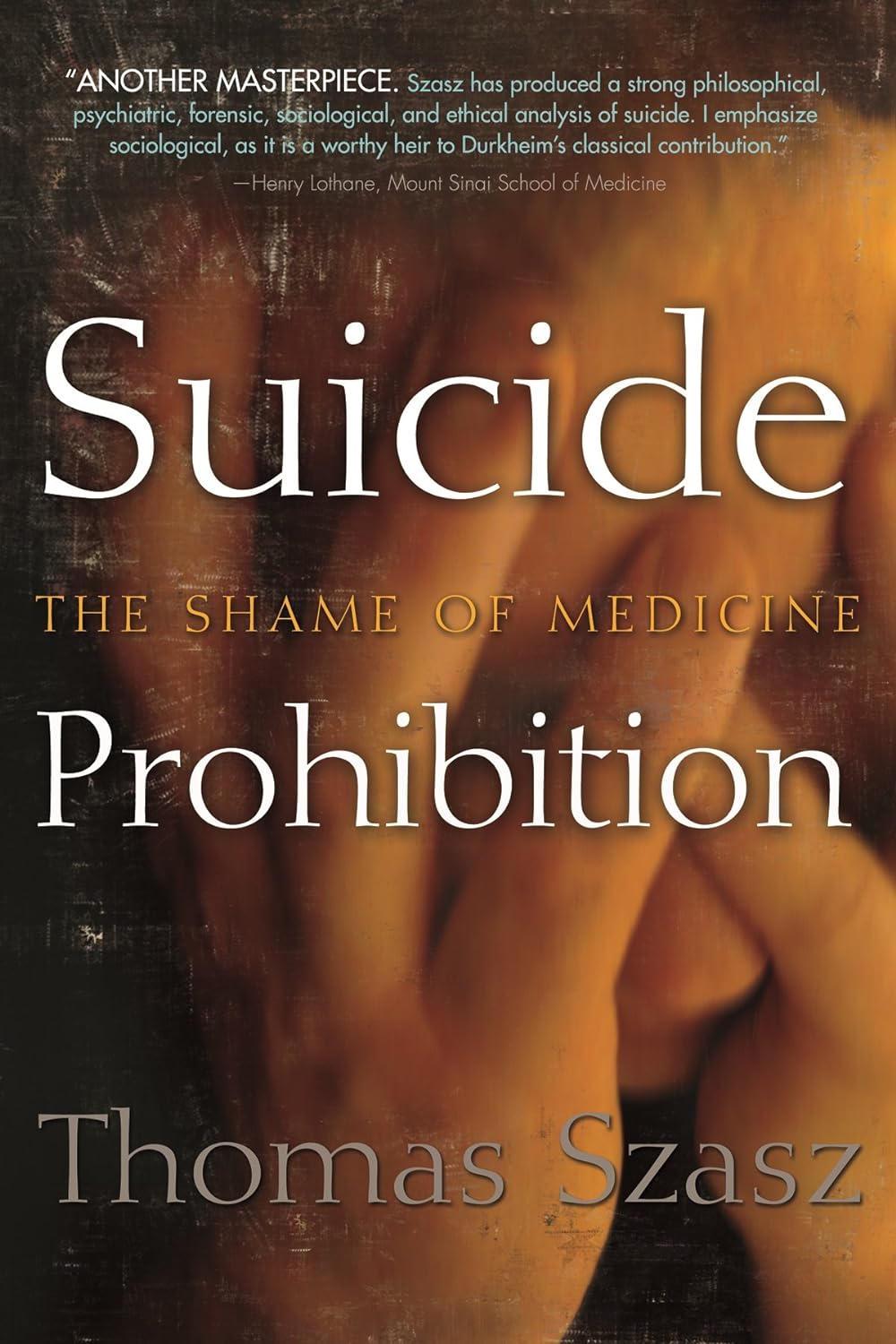Suicide Prohibition: The Shame of Medicine

Thomas Szasz was a controversial and sometimes contrarian personality who ended his own life in 2012 following a fall. Suicide Prohibition: The Shame of Medicine lays out a set of criticisms on mainstream medicine for the way that suicide is approached. He does not, however, constrain his attacks exclusively on medicine. He shines a light in the places where we seem to hold contradictory views.
Birth and Death Control
We have no control of our birth (or our conception, for that matter). Szasz argues that “the state” insists that we die that way. His arguments are similar to those made in Undoing Suicidism, but the arguments are more pointed. He speaks of our work to prevent death row inmates from dying by suicide and then executing them.
With the recent US Supreme Court decision overturning Roe v. Wade, the state governments have moved in to seize greater control of birth rights from mothers. Szasz’ argument is that governments want control of things that should rightfully belong to individuals.
We have a set of rules that apply to suicide that apply to no other condition, argues Szasz. Police officers can detain a person against their will on the suspicion that they’re a harm to themselves or others. Consider a hypothetical situation where an officer is 80% convinced of harm to self or others. The result is – effectively – imprisonment. (Detention against will.) No other condition except suicide carries the same consequences. There’s no officer detaining someone on the 80% chance that they might want to drive drunk.
Doctor–Patient Relationship
The foundation of any relationship is trust. (See The Righteous Mind, Trust, and The Science of Trust as a start.) The doctor–patient relationship has protections to allow patients to be able to share openly. However, suicide, for too many doctors, isn’t safe. It’s not something that everyone believes can be discussed, so they directly avoid patients talking about it. They intentionally ask screening questions in ways that lead the patient to know how to answer.
For those patients that push through and speak about suicide openly anyway, they find that they often are involuntarily detained as a risk to themselves. Instead of listening and understanding the life concerns that lead to suicidal thoughts, the doctor moves to deprive them of their freedom. These are, unfortunately, not isolated cases.
Even mental health professionals sometimes move in ways that shame patients. No-suicide contracts ask patients to commit to contact when symptoms worsen. The outcome is clearly institutionalization (loss of freedom), but patients are compelled to sign these contracts, because if they don’t, the providers will refuse to treat them.
I pause here for a moment to recognize how counter this is to everything we know about good mental health. We know that the best indicator of outcomes is therapeutic alliance – how the patient and provider relate – and this signals a complete breakdown. (See The Heart and Soul of Change.)
Carl Rogers implored therapists to treat their patients with “unconditional positive regard” and to acknowledge that they are the experts in their lives. (See A Way of Being.) Both David Jobes in Managing Suicidal Risk and Marsha Linehan in Cognitive-Behavioral Treatment of Borderline Personality Disorder explain that clinicians should work with their patients to support them – not to lord over them.
Mental Illness and Suicide
It’s odd. 90+% of people who die by suicide have a mental illness. 95% of people who have a mental illness won’t die by suicide. The reason both of these statistics can be true is because the number of people with mental illness is large – and the number of suicides (relatively speaking) is small. There’s another problem with these statistics: the number of people in the general population that qualify as having a mental illness. 20% or more of adults in the US admit to having had mental illness in the preceding year. That likely doesn’t include others who would be included if substance use disorder and alcohol use disorder were added in.
The problem is that mental illness and suicide have become tightly coupled in the minds of the public – and both have stigmas attached to them. Suicide has a long history with stigmatization, the escape from which was to claim mental illness. (See Stay and A Sadly Troubled History for more.) The result is that there’s little chance that a person suffering with suicidal ideation will be treated with compassion, should they reveal this fact.
Szasz highlights the missteps by President Bill Clinton on June 7, 1999, when he said, “As we’ve heard again today, mental illness can be accurately diagnosed, successfully treated, just as physical illness.” The problem when a public official makes outlandish claims is that the public trusts less of the truth – not more. The truth – despite what some may believe – is that we can’t get reliability of therapists diagnosing with the same condition much less agree on treatment. The DSM outlines the criteria for various conditions, but the criteria themselves leave so much room that it’s often hard for clinicians to make decisions. Twenty-five years after Clinton’s claim, we still can’t meet the idealistic standard that he proposed.
Prediction
Perhaps the hardest truth is that we still cannot accurately predict which individual will make a suicide attempt and who will not. There are some cases when we’re clear that someone is at risk – for instance, if they directly tell us. However, in most cases, we just don’t know. We know what leads to increased risk, but not which people will be responsible for the next iteration of those risk statistics. While we’ve not learned how to predict it, we have learned what won’t work to reduce suicide rates – Suicide Prohibition.
